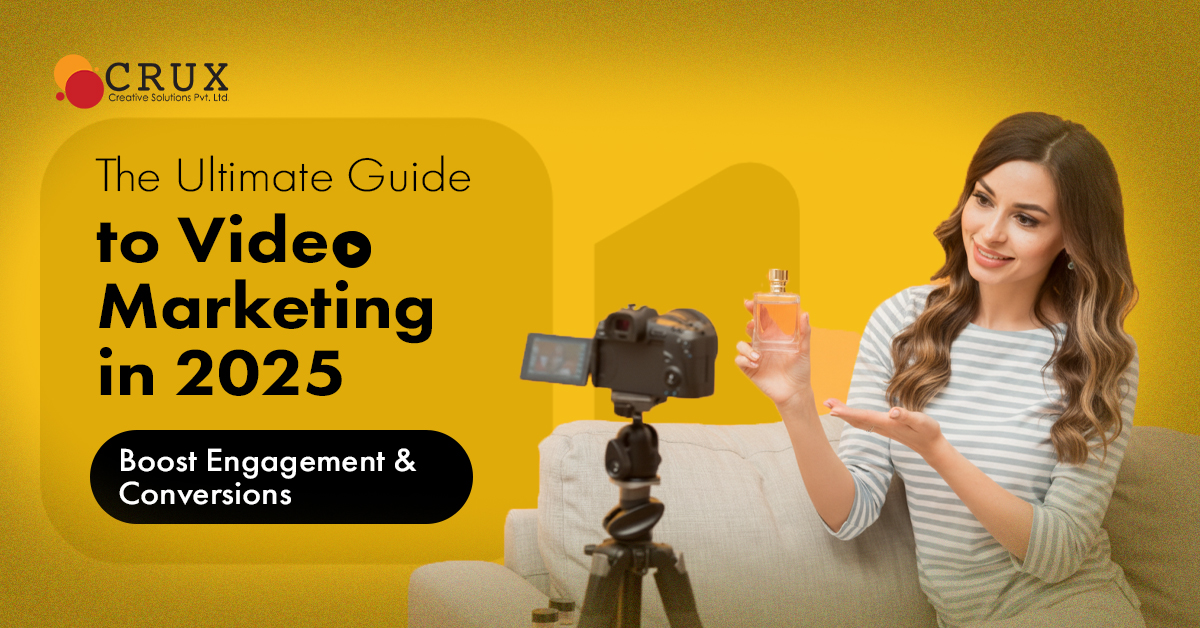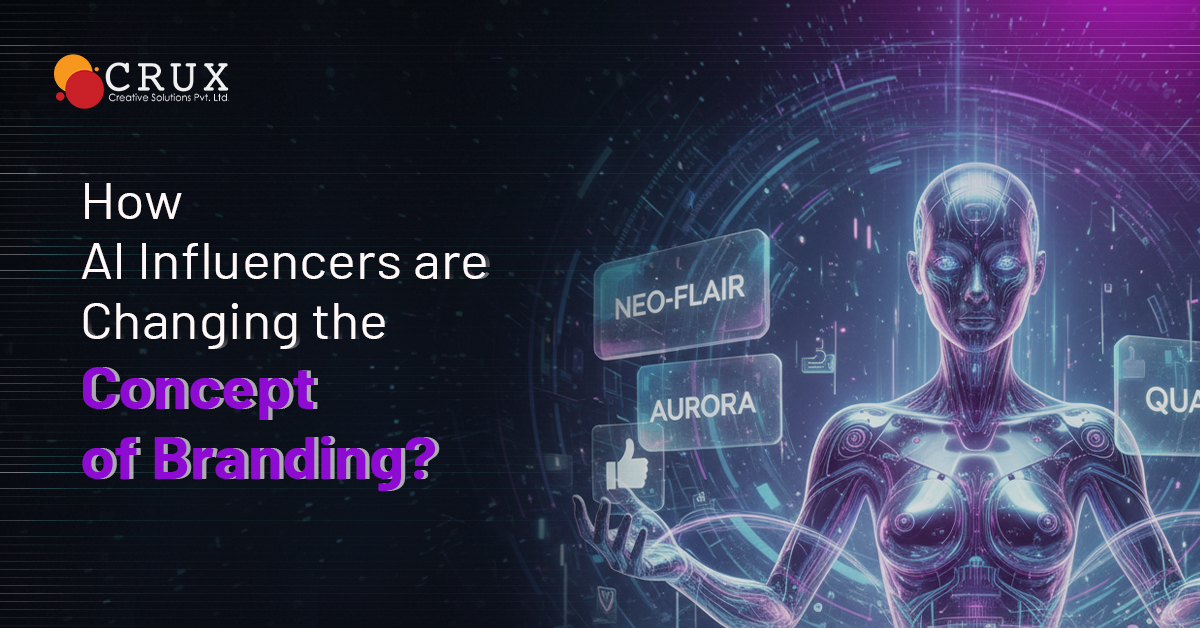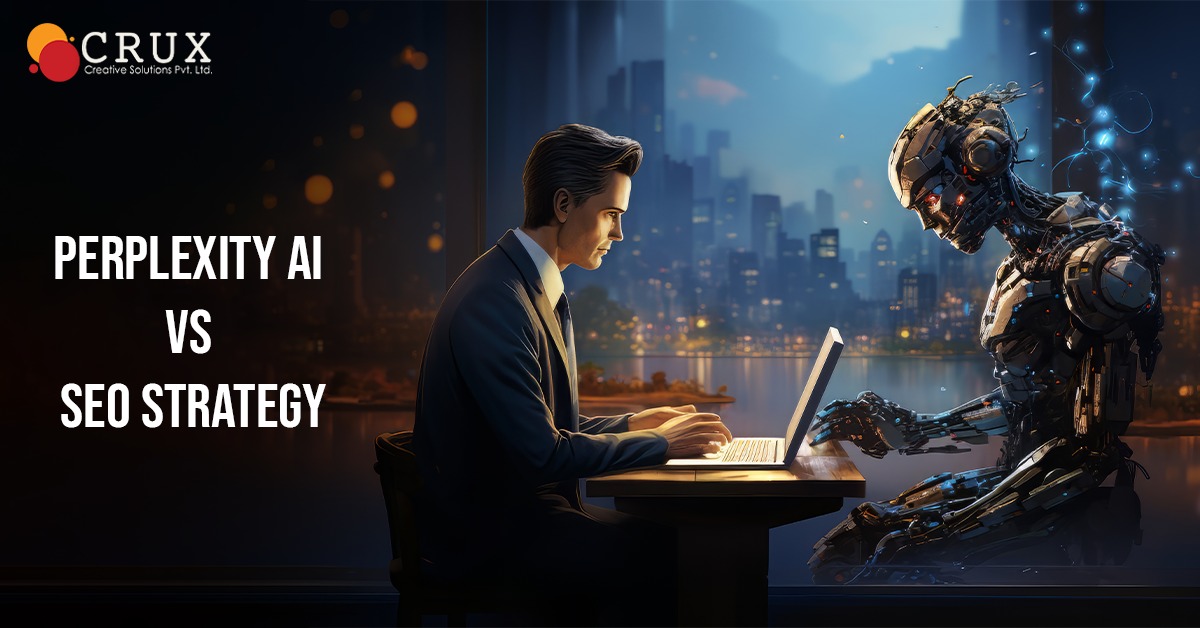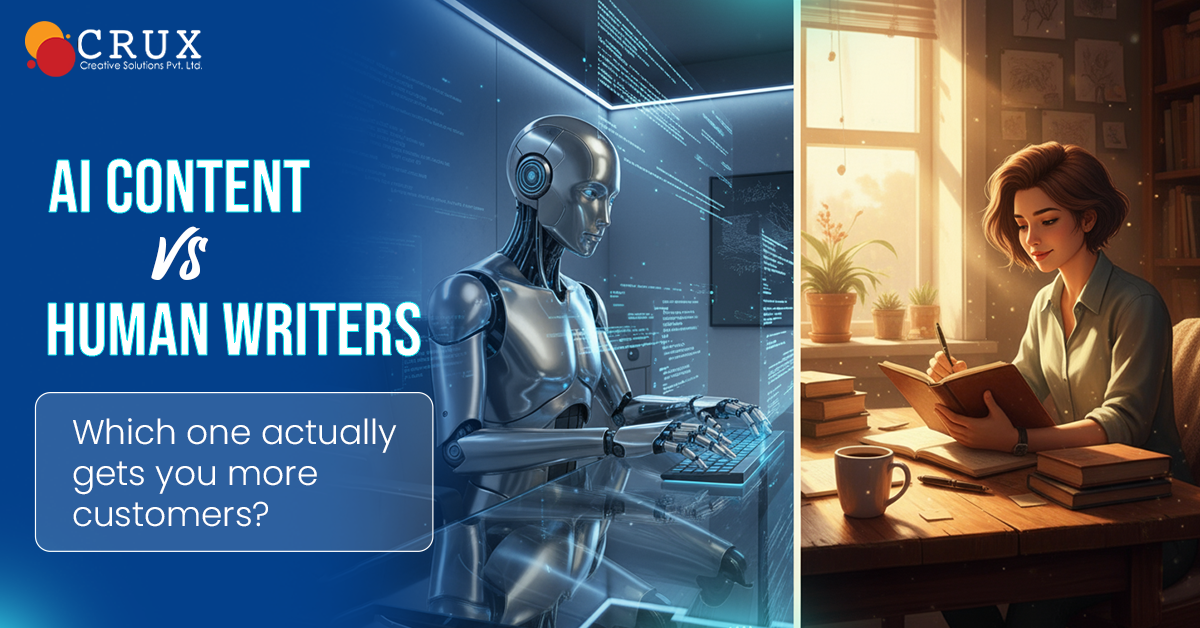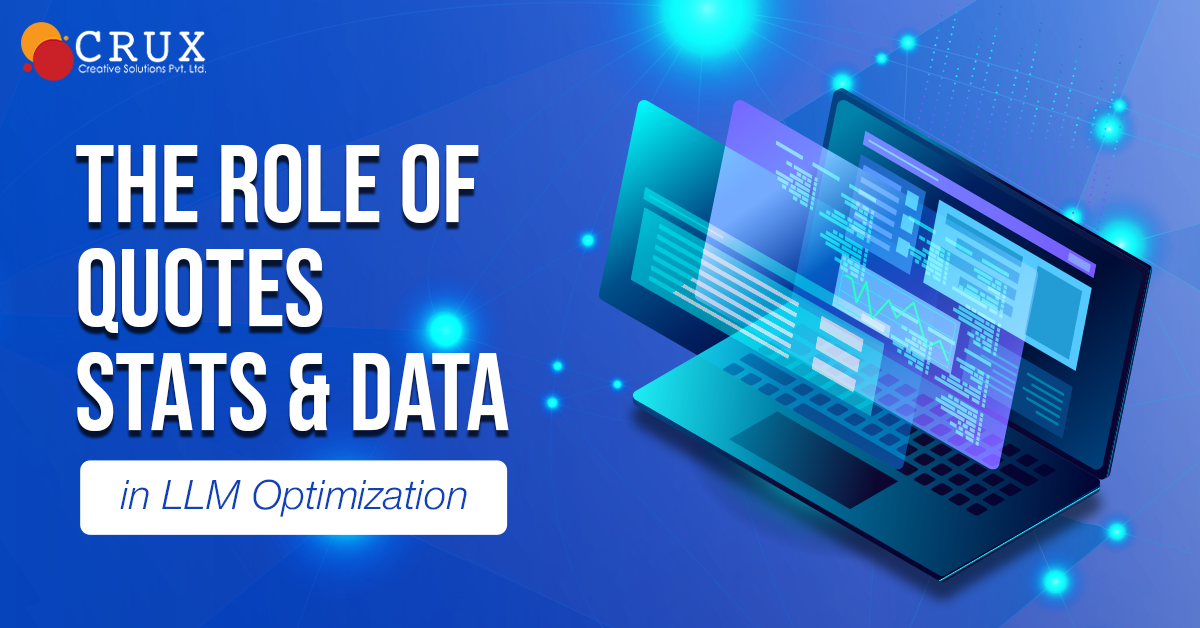
The Role of AI in Graphic Design: Disruption or Innovation?
Every day, more AI design tools launch with incredible capabilities. Your competitors are already using them to cut costs and speed up production. Businesses are experimenting with AI-generated content across all platforms. The fear is real and growing. Will designers become unnecessary? Should you abandon years of experience and expertise? Are we watching an entire profession disappear before our eyes? The uncertainty is paralyzing decision-makers and creating anxiety throughout the creative industry.
Here's the truth—AI isn't killing graphic design. It's transforming it into something more powerful. The designers and businesses that understand how to blend human creativity with AI capabilities will dominate the next decade. AI is a tool, not a replacement. It's innovation, not disruption. And those who embrace it strategically will create better work faster while those who resist will indeed get left behind.
What are AI's Current Capabilities?
AI has made remarkable progress in graphic design. Tools like Mi journey, DALL-E, and Stable Diffusion generate stunning images from text descriptions. Canva's Magic Design creates entire layouts automatically. Adobe's Firefly integrates AI throughout its creative suite. These aren't experimental technologies anymore—they're production-ready tools used by millions.
AI excels at certain tasks. It generates variations quickly, exploring dozens of concepts in minutes. It handles repetitive work efficiently, resizing graphics for multiple platforms automatically. It removes backgrounds, extends images, and matches color palettes with incredible precision.
For businesses, AI democratizes basic design. Small companies without design budgets can now create decent social media graphics, simple logos, and marketing materials. This accessibility is genuinely revolutionary for entrepreneurs and startups operating on shoestring budgets.
AI also speeds up workflows dramatically. What took hours now takes minutes. Designers can iterate faster, test more concepts, and deliver projects quicker than ever before.
Where AI Falls Short (And Always Will)
Despite the hype, AI has significant limitations that human designers should understand and leverage.
- AI lacks strategic thinking. It can't understand your business goals, target audience psychology, or brand positioning. It doesn't know why certain design choices connect with specific demographics or how visual hierarchy guides user behavior. AI generates images based on patterns, not strategy.
- AI can't conduct discovery. Great design starts with understanding problems deeply. What are you trying to communicate? Who needs to receive this message? What emotions should the design evoke? What actions should it inspire? AI can't ask these questions, conduct stakeholder interviews, or uncover hidden insights.
- AI struggles with originality. It remixes existing patterns and styles because it learns from existing work. True innovation—creating something genuinely new that breaks conventions meaningfully—remains uniquely human. AI-generated work often feels generic because it represents the statistical average of its training data.
- AI misses cultural context and nuance. Design communicates across cultures, subcultures, and contexts. A color, symbol, or style carries different meanings in different settings. AI doesn't understand these subtleties. It can't anticipate how designs will be perceived by specific communities or avoid cultural missteps.
- AI can't build relationships. Design is collaborative. It requires communication, feedback loops, revisions based on stakeholder input, and sometimes defending creative decisions. The human relationship between designer and client remains irreplaceable.
- AI lacks taste and judgment. It generates options but can't evaluate which option truly works best for a specific situation. Experienced designers develop intuition—knowing when to break rules, when less is more, and when a design "feels right."
The Hybrid Approach: Humans + AI
The future isn't human versus machine. It's human and machine working together, each doing what they do best.
Smart designers use AI as a creative partner. They generate initial concepts with AI, then refine them with human expertise. They use AI for time-consuming technical tasks while focusing their energy on strategy, storytelling, and client relationships.
Here's how the hybrid workflow looks in practice:
- Ideation phase: Use AI to generate multiple visual directions quickly. Explore styles, color palettes, and compositions you might not have considered. Let AI spark ideas rather than limit them.
- Asset creation: Generate backgrounds, textures, or base elements with AI. Create placeholder graphics or mockup content. Let AI handle the grunt work of producing raw materials.
- Refinement: Apply human judgment to select the strongest concepts. Modify AI outputs to match brand guidelines precisely. Add the subtle touches that create emotional resonance.
- Strategic application: Ensure designs serve business objectives. Test them against user needs. Optimize for the specific platforms and contexts where they'll appear.
This approach delivers the speed of AI with the strategic value of human expertise. Businesses get better results faster, and designers stay relevant by focusing on high-value work.
AI's Impact on Different Design Disciplines
AI affects various design specialties differently.
- Logo design: AI can generate logo concepts, but successful logos require deep brand strategy. They must work across applications, scale to different sizes, and remain meaningful for years. AI produces logos, but it can't create brand identities that resonate deeply with target audiences.
- Social media graphics: This is where AI excels. Quick turnaround content benefits immensely from AI tools. However, maintaining consistent brand voice and creating content that truly engages requires human understanding. Professional Social Media Video Production Services that combine AI efficiency with creative expertise deliver the best results—quick turnarounds without sacrificing quality or strategic thinking.
- Marketing materials: AI handles templates and variations well. But persuasive marketing design requires understanding consumer psychology, crafting compelling narratives, and making strategic choices about emphasis and messaging hierarchy.
- Web and UI design: AI assists with layout generation and asset creation. Yet user experience design demands deep understanding of user behavior, accessibility standards, and technical constraints. An animation explainer video company might use AI to speed up production, but the storytelling structure and pedagogical approach require human expertise.
- Illustration: AI-generated illustrations have exploded in popularity. They're perfect for rapid content creation. However, distinctive illustration styles that build recognizable brand identities still require human artists who develop unique visual languages.
Business Implications: Costs and Opportunities
For businesses, AI in design creates both opportunities and challenges.
- Cost considerations: Basic design work becomes cheaper. Simple graphics, quick variations, and template-based content cost less than ever. However, strategic design work retains its value because AI can't replace the thinking behind effective design.
- Speed advantages: Projects move faster from concept to completion. Testing multiple directions happens quickly. Iterations cost less time and money. Businesses can be more agile in their visual communications.
- Quality expectations: The bar rises. When everyone can create decent graphics, standing out requires exceptional work. Professional design becomes more important for differentiation, not less.
- Skill requirements shift: Businesses need team members or partners who understand both AI capabilities and strategic design thinking. The valuable professionals are those who orchestrate AI tools while applying creative direction.
Many forward-thinking businesses combine AI tools with professional services strategically. They use AI for routine content while investing in professional expertise for brand-critical work. This balanced approach optimizes both budget and impact.
The Evolution of the Designer's Role
Designers aren't becoming obsolete—they're evolving into creative directors and strategic partners.
Tomorrow's successful designers are:
- AI-fluent creators who master multiple AI tools and understand their strengths and limitations. They spend less time on technical execution and more time on creative direction.
- Strategic consultants who ask the right questions, uncover client needs, and translate business objectives into visual solutions. Their value lies in thinking, not just making.
- Brand storytellers who craft narratives across touchpoints. They ensure consistency, authenticity, and emotional resonance—things AI cannot achieve alone.
- Technology orchestrators who manage workflows combining human creativity, AI capabilities, and client collaboration. They're comfortable with complex, hybrid processes.
The designers who resist AI will struggle. Those who embrace it as a powerful tool in their arsenal will thrive. It's similar to when digital tools replaced traditional methods—photographers who adopted Photoshop flourished while those who resisted faded away.
AI in Adjacent Creative Fields
AI's design impact extends beyond static graphics. Video production, content marketing, and digital strategy all feel the effects.
For businesses needing content at scale, AI seo services now combine AI-generated graphics with optimized content strategies. This integration helps companies produce more content faster while maintaining SEO effectiveness.
Video content creation increasingly incorporates AI for editing, effects, and even script development. Professional services in regions like social media video production services gurugram blend AI efficiency with local market expertise—a combination that delivers culturally relevant content at competitive speeds.
The pattern repeats across creative disciplines: AI handles repetitive tasks and accelerates production while humans provide strategy, creativity, and quality control.
Practical Steps for Designers and Businesses
- For designers: Start experimenting with AI tools immediately. Understand their capabilities and limitations firsthand. Learn to direct AI effectively rather than simply accepting its outputs. Focus on developing skills AI can't replicate—strategic thinking, client communication, and creative problem-solving. Position yourself as a creative director who happens to use AI rather than a technician being replaced by it.
- For businesses: Invest strategically in both AI tools and human expertise. Use AI for high-volume, quick-turnaround work. Hire professionals for brand strategy, complex projects, and anything customer-facing that significantly impacts perception. Don't assume AI eliminates the need for design expertise—it changes what you should pay for.
- For everyone: Stay curious and adaptable. This technology evolves rapidly. What's impossible today becomes standard tomorrow. Continuous learning is essential for staying relevant.
The Verdict: Innovation Wins
AI in graphic design is definitively innovation, not disruption. It's not destroying the profession—it's elevating it.
The best work has always combined technical skill with strategic thinking, creativity, and understanding of human psychology. AI handles more of the technical execution, freeing designers to focus on strategy and creativity. This shift makes design more valuable, not less.
Businesses gain access to better design at various price points. Designers gain powerful tools that amplify their capabilities. Consumers benefit from better visual communication everywhere.
The key is perspective. View AI as a brush, not an artist. As a tool, not a replacement. As an opportunity, not a threat.
The future belongs to those who combine human creativity with AI capabilities. That future is already here. Embrace it, master it, and create work that neither humans nor AI could produce alone.





